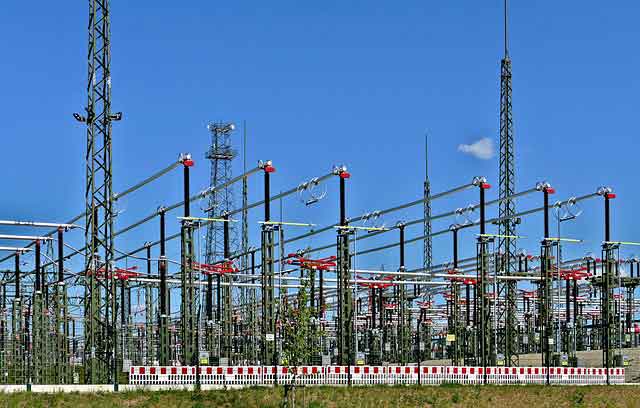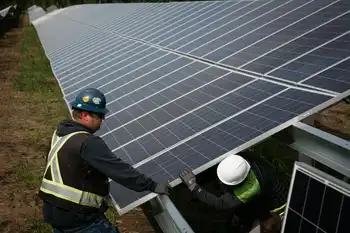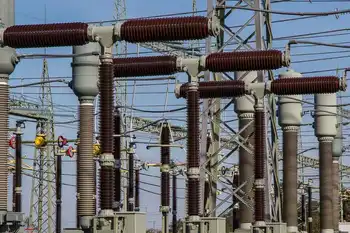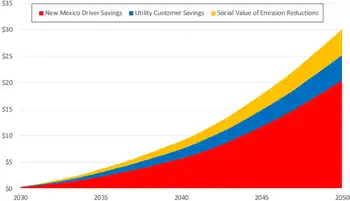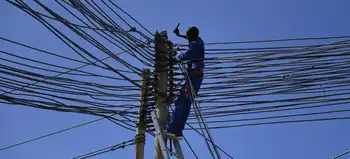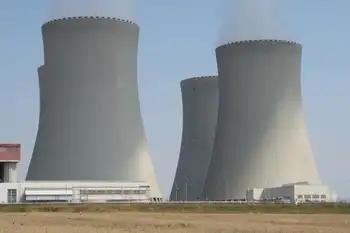Niagara Falls Powerhouse Gets a Billion-Dollar Upgrade for the 21st Century

NFPA 70b Training - Electrical Maintenance
Our customized live online or in‑person group training can be delivered to your staff at your location.

- Live Online
- 12 hours Instructor-led
- Group Training Available
Sir Adam Beck I refurbishment boosts hydropower capacity in Niagara, upgrading turbines, generators, and controls for Ontario Power Generation. The billion-dollar project enhances grid reliability, clean energy output, and preserves heritage architecture.
Key Points
An OPG upgrade of the historic Niagara plant to replace equipment, add 150 MW, and extend clean power life.
✅ Adds at least 150 MW to Ontario's clean energy supply
✅ Replaces turbines, generators, transformers, and controls
✅ Creates hundreds of skilled construction and engineering jobs
Ontario's iconic Sir Adam Beck hydroelectric generating station in Niagara is set to undergo a massive, billion-dollar refurbishment. The project will significantly boost the power station's capacity and extend its lifespan, with efforts similar to revitalizing older dams seen across North America, ensuring a reliable supply of clean energy for decades to come.
A Century of Power Generation
The Sir Adam Beck generating stations have played a pivotal role in Ontario's power grid for over a century. The first generating station, Sir Adam Beck I, went online in 1922, followed by Sir Adam Beck II in 1954. A third station, the Sir Adam Beck Pump Generating Station, was added in 1957, highlighting the role of pumped storage in Ontario for grid flexibility, Collectively, they form one of the largest hydroelectric complexes in the world, harnessing the power of the Niagara River.
Preparing for Increased Demand
The planned refurbishment of Sir Adam Beck I is part of Ontario Power Generation's broader strategy, which includes the life extension at Pickering NGS among other initiatives, to meet the growing energy demands of the province. With the population expanding and a shift towards electrification, Ontario will need to increase its power generation capacity while also focusing on sustainable and clean sources of energy.
Billions to Secure Sustainable Energy
The project to upgrade Sir Adam Beck I carries a hefty price tag of over a billion dollars but is considered a vital investment in Ontario's energy infrastructure, and recent OPG financial results underscore the utility's capacity to manage long-term capital plans. The refurbishment will see the replacement of aging turbines, generators, and transformers, and a significant upgrade to the station's control systems. Following the refurbishment, the output of Sir Adam Beck I is expected to increase by at least 150 megawatts – enough to power thousands of homes and businesses.
Creating Green Jobs
In addition to securing the province's energy future, the upgrade presents significant economic benefits to the Niagara region. The project will create hundreds of well-paying construction and engineering jobs, similar to employment from the continued operation of Pickering Station across Ontario, during the several years it will take to implement the upgrades.
Commitment to Hydropower
Ontario Power Generation (OPG) has long touted the benefits of hydropower as a reliable, renewable, and affordable source of energy, even as an analysis of rising grid emissions underscores the importance of clean generation to meet demand. The Sir Adam Beck complex is a shining example and represents a significant asset in the fight against climate change while providing reliable power to Ontario's businesses and residents.
Balancing Energy Needs with Heritage Preservation
The refurbishment will also carefully integrate modern design with the station's heritage elements, paralleling decisions such as the refurbishment of Pickering B that weigh system needs and public trust. Sir Adam Beck I is a designated historic site, and the project aims to preserve the station's architectural significance while enhancing its energy generation capabilities.





